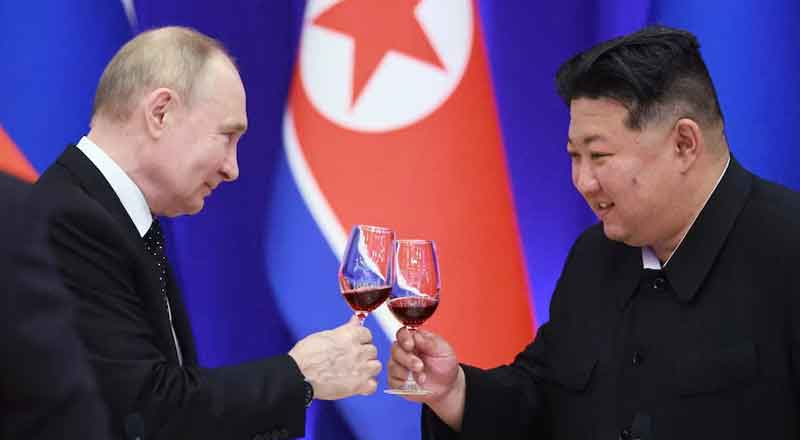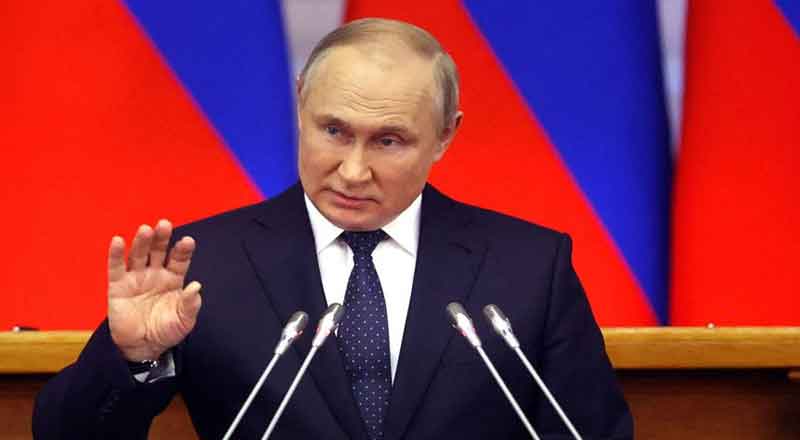In a stark escalation of the Ukraine conflict, the United States has reported that Russia has amassed an estimated 50,000 troops, including 10,000 North Korean soldiers, in Kursk, a province bordering Ukraine. This development highlights the growing complexity of the ongoing war, especially as Russia’s forces are now reportedly prepared to launch a major offensive to reclaim Ukrainian-held territories. Against this volatile backdrop, recent reports suggest that the U.S. President-elect Donald Trump has engaged directly with Russian President Vladimir Putin, urging de-escalation. These concurrent events have intensified global scrutiny as the conflict edges toward potentially new and more dangerous dimensions.
The Build-Up in Kursk: Russia and North Korea’s Military Collaboration
Russia’s mobilization of forces in the Kursk region is part of a larger response to Ukraine’s recent incursion into Russian territory. In August, Ukrainian forces achieved a rare breakthrough by advancing into Kursk and capturing nearly 1,000 square kilometers of territory. This advance also extended into the Belgorod region. However, while Ukraine managed to secure ground, these territorial gains have not translated into lasting strategic advantages, as Russia has since regained control over parts of Kursk and Belgorod, chipping away at Ukraine’s position in the region.
U.S. intelligence has confirmed that the assembled forces in Kursk consist of Russian troops supported by 10,000 North Korean soldiers. Notably, Russia has managed this build up without diverting forces from other fronts in eastern Ukraine, suggesting an ability to wage a two-front war. With an attack expected soon, Ukrainian officials are bracing for a powerful counter-assault, which could reshape the frontlines and signal a shift in momentum in Russia’s favour.
North Korean Soldiers on the Frontlines
The deployment of North Korean troops has raised significant international concern. According to reports from Ukrainian commanders, North Korean personnel are already engaged in combat operations, both in Kursk and in the defensive positions in Belgorod and other Russia-occupied areas. Known for their specialized skills in artillery and sniper tactics, North Korean soldiers are expected to play a key role in direct combat against Ukrainian forces. U.S. sources indicate that Russia has supplied these soldiers with an array of weaponry, including machine guns, sniper rifles, and rocket-propelled grenades. Additionally, Russian training for North Korean forces has included artillery fire and infantry tactics, a signal that these troops may participate in frontal assaults on fortified Ukrainian positions.
Russia’s Recent Gains and Ukraine’s Strategic Gamble
Russia has made significant territorial gains throughout the year, capturing key cities like Vuhledar and Ukrainsk. Most recently, Russian forces have drawn dangerously close to surrounding Pokrovsk, a strategic Ukrainian city that could alter the course of the war if captured. The presence of North Korean troops in direct combat further complicates Ukraine’s position, as it now faces a bolstered and diversified Russian military force.
Ukraine’s decision to divert some of its best-trained soldiers and advanced weaponry toward the Kursk incursion may have backfired, creating a vulnerability in its defenses along other critical frontlines. With Russian forces pressing forward unrelentingly, Ukraine’s gamble in Kursk appears increasingly costly, weakening its defensive capabilities in key areas and offering Russia a tactical advantage.
Diplomatic Interference: Trump’s Call to Putin
Amid these developments, incoming U.S. President Donald Trump has reportedly reached out to President Putin, urging him to avoid escalating the conflict further. Trump’s outreach, which took place from his Mar-a-Lago estate, reflects his well-known stance on reducing U.S. involvement in the Ukraine conflict. Trump, who has consistently expressed skepticism about continued military aid to Ukraine, is believed to have reminded Putin of America’s military presence in Europe while signaling an interest in future discussions to expedite a resolution.
This call marks a notable shift in the U.S. approach to the Ukraine conflict, as Trump has frequently argued for negotiating an end to hostilities. The potential influence of Trump’s administration has also prompted mixed responses internationally. While Ukraine’s President Volodymyr Zelensky has indicated openness to further discussions with Trump, concerns remain among Ukrainian and European allies that Trump’s inclination toward diplomacy with Russia may pressure Ukraine to make territorial concessions.
Biden Administration’s Final Push for Support
With President Trump set to take office in January, the Biden administration has committed to providing Ukraine with maximum support before the presidential transition. National Security Advisor Jake Sullivan has confirmed that the White House intends to use the remaining $6 billion in military funding to strengthen Ukraine’s position on the battlefield. This final round of support aims to help Ukraine secure strategic leverage before entering any potential negotiations, ensuring that Kyiv retains a strong position in the face of mounting Russian advances.
An Uncertain Path Forward
The unfolding events in Ukraine underscore the high-stakes nature of the conflict, with Russia’s alliance with North Korea raising serious questions about the regional and global ramifications of the war. Meanwhile, Donald Trump’s call to Putin introduces a new diplomatic dimension, albeit one that could bring pressure on Ukraine to consider compromises it has thus far resisted. As winter approaches, Ukraine faces immense challenges, with formidable Russian and North Korean forces threatening its hard-won gains and signaling the possibility of further escalation. The next few months will be crucial, as the decisions made by leaders on all sides may determine not only the future of Ukraine but also the stability of the broader European landscape.
(With inputs from agencies)





